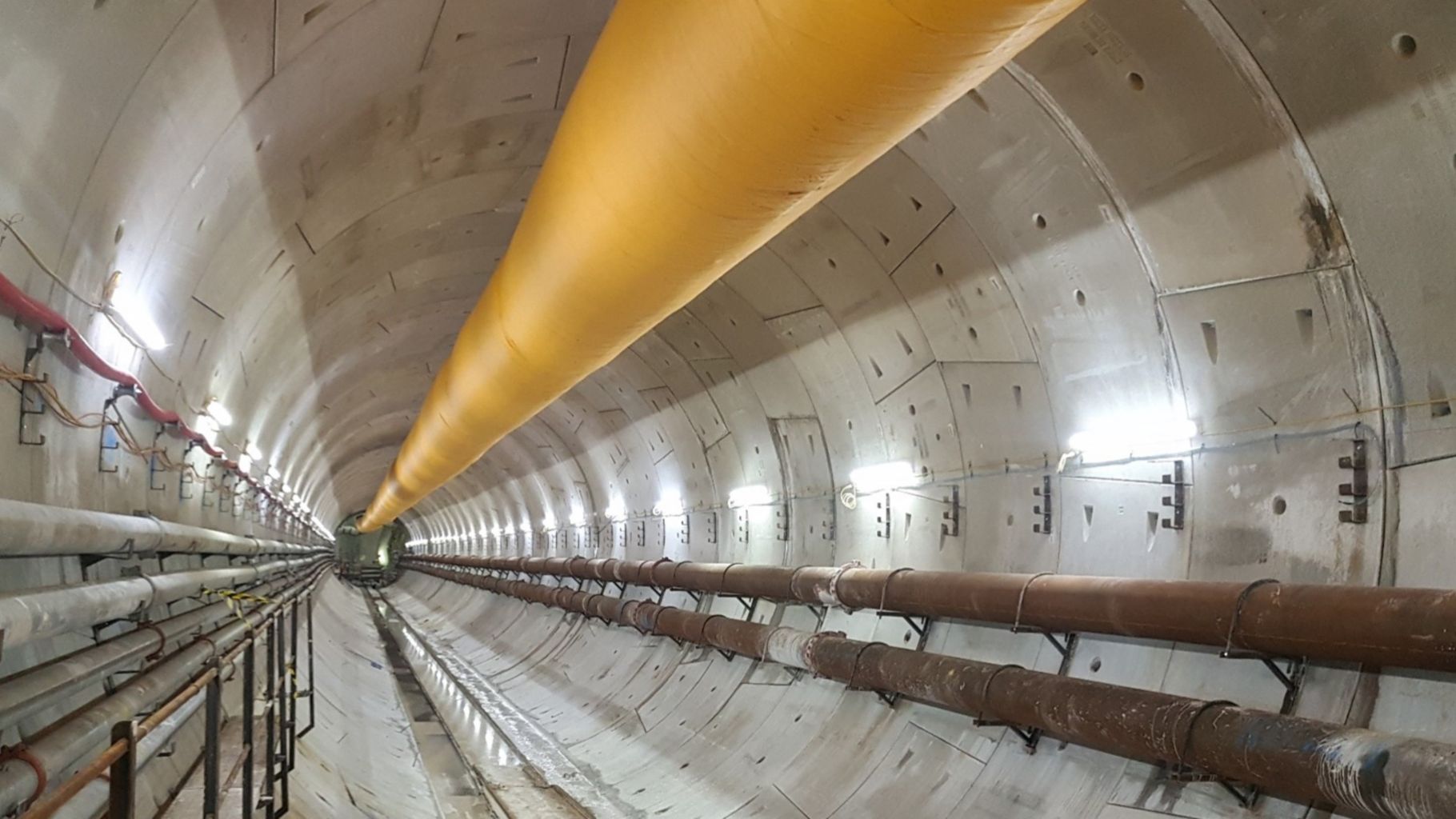2022
London, United Kingdom
Dubbed ‘London’s Super Sewer’, Thames Tideway Tunnel is the biggest infrastructure project ever undertaken by the UK water industry.
Designed to upgrade London’s 150-year-old sewer network, originally built for a population less than half its current size, during heavy rainfall the existing infrastructure was releasing millions of tonnes of untreated raw sewage into the River Thames each year.
The new 25 km solution would intercept wastewater and storm water to divert it into plants in a bid to clean up the river.
Project Requirements
Concrete is the most common building material used in the world with circa 6 billion cubic metres produced every year, representing around 7% of the worldwide carbon footprint. The Thames Tideway Tunnel project committed to reduce the carbon footprint as much as possible, and the concrete formed a key part of this.
The east section of the Thames Tideway Tunnel consists of five work sites, including the construction of two 10 km sections of tunnel, deep shafts, maritime works and structures connected with the existing system.
Sika’s products control water reduction, consistence and workability retention.
Sika Solutions
Working in partnership with project partners, Hanson, a number of reduced carbon and ultra-low carbon concrete mix designs were created for both permanent and temporary work structures.
Sika supported the implementation of admixtures and their associated performance potential through its laboratories, delivering a total of 400,000 L of three main products:
- Sika ViscoFlow® 1000 - particularly suited for use in concretes that require low water/cement ratios and / or high water reductions with excellent workability retention properties of up to 3 hours
- Sika Plastiment®-180 - formulated from modified lignosulphonates, this admixture produces a more uniformly cohesive and stable concrete and aids in water-reduction·
- SikaTard® R - developed for the control of cement hydration, this admixture retards and stabilises the concrete mixes.
Significant improvements with regards to greenhouse gas emissions associated with concrete were achieved as follows:
Permanent work structures
- Abrasion-Resistant Concrete mixes containing 40% GBBS (Ground Granulated Blast-furnace Slag) were redesigned to contain 50% - the highest dosage permitted for compliance
- The increase of GBBS content represents 46kg CO2e per m³ of concrete
- The initial 450 m³ represented a benefit of more than 20 tons CO2e
- A ‘low heat’ concrete mix was re-designed to achieve 73% rather than 67% GGBS
- Carbon dioxide emissions were decreased to 26kg CO2e per m³ concrete, corresponding to 180kg CO2e
- With approximately 5,000 m³ poured until the end of August 2021, a reduction of more than 125 tons CO2e was achieved
- Lower carbon mixes produced by HANSON with Sika admixtures represented more than 98% of permanent work structures
Temporary work structures
The action plan was also applied to temporary work structures, resulting in the following:
- C20/25 to C25/30 mixes containing 80% / 85% / 90% GBBS were respectively called EcoMix80 / EcoMix85 / EcoMix90 and were designed and subsequently approved for temporary work structures at Tideway East
- All EcoMixes allow a reduction of at least 70 kg CO2e compared to mixes used for similar applications
- ULC (ultra-low carbon) designs for C30/37 to C40/50 mixes were required for higher-strength structures, as the aforementioned EcoMixes only achieved 25-30 MPa at 28 days where 35-50 MPa was required
- The redesigned mix reached 50 MPa at 28 days and more than 57 MPa at 56 days
- The ULC mix led to a diminution of at least 100kg CO2e/m³ versus mixes used on site for similar applications
- As an example, pouring 280m³ of the ULC concrete for batching plant foundations led to a saving of circa 20,000kg CO2e
By calculating the carbon footprint of each mix and categorising them following the VINCI branded ‘Exegy’ Matrix allowed a clear understanding of the project emissions and a process to set defined and achievable concrete carbon footprint targets for the future.
In Summary
Between the start of the project in 2017 and up until the end of August 2021, roughly 63% of the permanent work structures on Tideway East (87,000m³ out of 137,000m³) were poured with low carbon concrete mixes.
All carbon footprint savings figures have been calculated using the VINCI Construction CO2CRETE IMPACT tool.
Supporting information:
Project Participants
Hanson UK - Readymix Supplier

